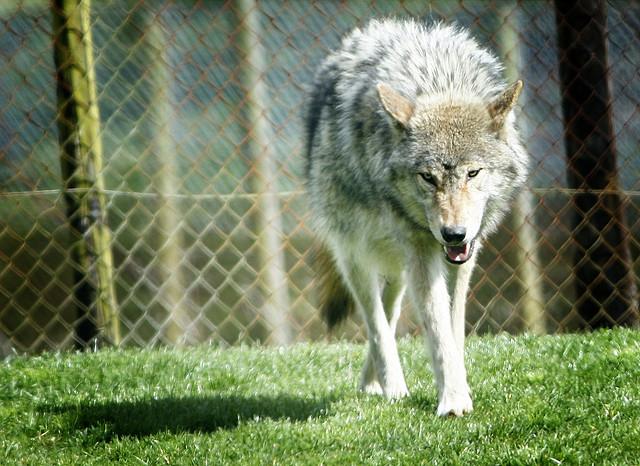Wolf hunters in Wisconsin exceeded the kill limit for the third-straight year, prompting protesters to gather at the Capitol Monday, accusing the state government of mismanaging the wolf hunt.
The wolf-hunting season was officially called off Friday, after beginning Oct. 15. The Department of Natural Resources-issued 2014 quota was 150 wolves, and this year’s final total was 154.
In spring 2012, Act 169, which enacted the wolf hunt, was signed into law. Before this, the wolves had been listed as an endangered species in the state. As a way to regulate the new hunting season, the DNR issued a yearly quota for wolf hunters, which has been exceeded every year since.
Professor Timothy Van Deelan, an expert in conservation and management of large mammals in the Great Lakes region at the University of Wisconsin said he believes the reason they go over is due to uncertainty.
“They don’t want to close the quota too early and get criticized by someone in a unit where there might still be one or two individuals under the quota,” Van Deelan said.
In Wisconsin, the state is divided into six wolf-hunting zones. Hunters and trappers are required to notify the DNR within 24 hours of harvesting a wolf. Based on the tallies they receive, the DNR then decides to close the season. The closure takes full effect 24 hours after it’s announced.
“When you have trappers and hunters in the field, you can’t just put the brakes on instantly,” Van Deelan said. “I think this year we went over by four individual wolves, which is trivial in a population this size.”
Patrick Durkin, an outdoor writer, editor and columnist for outdoorhub.com agreed that regulating the wolf hunt in Wisconsin is not an exact science.
“Hunting is not a perfectly conditioned thing,” Durkin said. “To expect that kind of precision, where we’re right down to the number every time, I think that’s an unrealistic expectation.”
Durkin said the large size of the state and the mobility of hunters are two major obstacles when trying to calculate and regulate the quota. He said traps are often left in the woods, even after the season has been closed.
In addition, Durkin said it is important to consider the history of the wolf population in Wisconsin. In 1975, the gray wolf was listed as a state endangered species, which is no longer the case.
“It was down to a handful of wolves,” Durkin said. “They bounced back from a real low number and rebuilt their own population.”
The DNR website states that in 2011, there were about 800 gray wolves living in Wisconsin. The animal has been delisted as an endangered population at the state and federal level.
“Given the history of this animal and how well it’s come back in a relatively short time period, I can’t think this is as fragile of a population as some folks are trying to make it out to be,” Durkin said.
Neither Durkin nor Van Deelen thought that exceeding the kill limit for wolves was a major threat to the well-being of the population.
The Associated Press reported the DNR plans to create a draft for a new plan regarding wolf hunting that will be released in January. The new options will be finalized in March, according to the DNR.













